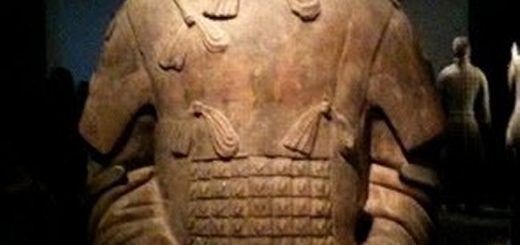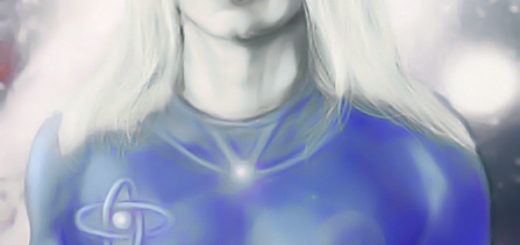Are The Paracas Skulls Evidence of Ancient Aliens?

Ever since their discovery, the enigmatic Paracas skulls have fascinated researchers. Are they evidence of a new –previously unknown—human species? Different in every way from the Homo Sapiens, Neanderthals, and the Denisovan hominid?
The truth is that everything about the Paracas skulls is fascinating. Interestingly, one of the most surprising facts about these elongated skulls is the fact that according to research, the cranial volume of the Paracas skulls is up to 25 percent larger and 60 percent heavier than conventional human skulls, which means they could not have been intentionally deformed through head binding methods as researchers suggested in the past. Simply put, head binding does not, and cannot increase the cranial volume.
Furthermore, another crucial piece of evidence which suggests the Paracas skulls belonged to a completely different species is the fact that unlike conventional human skulls, the “Paracas Skulls” only have one parietal bone. The human skull is composed of two parietal bones located between the frontal and occipital, forming the sides of the calvaria.
The calvaria or also called skullcap, is made up of the superior portions of the frontal bone, occipital bone, and parietal bones. These differences show us that cranial deformation is unintentional, and makes the “Paracas Skulls” a highly debatable subject among researchers who according to their theories, have solid arguments that sustain their point of views. Yet, even though there are so many explanations regarding the elongated skulls, the “Paracas skulls” remain a mystery among scientists.
The people of Paracas, by which the Paracas Peninsula is named, lived in the coastal region of Peru around 800 BC to 100 AD, making them one of the oldest known Andean cultures. They had an aptitude for irrigation and water management and were one of the most spiritually developed cultures in the area.
However, the Paracas culture was one of the oldest ancient Andean people who practiced head binding by using rope, cloth, and wooden boards, which resulted in extremely elongated skulls. This, however, could not have increased the cranial volume of the skulls.
According to researchers, this was done for spiritual or religious reasons, and scholars believe head binding was an effort of the ancient Paracas to look more like their deities.
And while the mysterious Paracas skulls have been the center of debate ever since their discovery, their origin remains a mystery.
Author David Childress has long theorized that these strange, elongated skulls, are the result of contact between extraterrestrial beings and humans before the appearance of the Paracas culture and that it is from there that the ancient Paracas people decided to copy the appearance of the ‘Gods’.
According to Brien Foerster, “It had mtDNA (mitochondrial DNA) with mutations unknown in any human, primate, or animal known so far.”
A geneticist who participated in the study said: “the individuals from the Paracas skulls were so biologically different that it would have been impossible for humans and them to ‘interbreed’. “I am not sure it will even fit into the known evolutionary tree.”
Are the Paracas skulls the missing link in the origin of mankind? Do they belong to a species that did not originate on Earth? Or are they just another example of cranial deformation?
Interestingly, Five samples of the Paracas skulls were sent to undergo genetic testing. The samples which consisted of hair, skin teeth and some fragments of cranial bones gave incredible details that have fueled the mystery surrounding these anomalous skulls. The genetic laboratory to where the samples were sent was not informed of the origin of the skulls in order to avoid ‘influenced results’. The mitochondrial DNA, which is inherited from the mother, showed mutations that were unknown to any man, primate or animal found on planet Earth.
Interestingly, apart of the enigmatic skulls found by Peruvian archeologist, Julio Tello in 1928, the Paracas region has other incredible features that are worth mentioning.
One of them is the incredible Paracas Candelabra.
The mysterious formation is perfectly aligned north and south and can even be seen around 12 miles from the sea. In the vicinity, researchers have discovered remains of pottery, which has led them to believe that the Paracas Candelabra is, in fact, the work of the Pre-Incan ‘Paracas’ People. The true meaning and purpose remain a widely debated subject among experts.
While the Paracas candelabra can also be seen from the sky, it’s not as visible as the Nazca lines which are located around 160 kilometers to the southwest.



 Creators of mankind
Creators of mankind Description of “Tall white aliens”
Description of “Tall white aliens” Where they came from?
Where they came from? About hostile civilizations
About hostile civilizations The war for the Earth
The war for the Earth “Tall white aliens” about eternal life
“Tall white aliens” about eternal life Video: “Nordic aliens”
Video: “Nordic aliens” Aliens
Aliens Alien encounters
Alien encounters The aliens base
The aliens base UFO
UFO Technology UFO
Technology UFO Underground civilization
Underground civilization Ancient alien artifacts
Ancient alien artifacts Military and UFO
Military and UFO Mysteries and hypotheses
Mysteries and hypotheses Scientific facts
Scientific facts


















